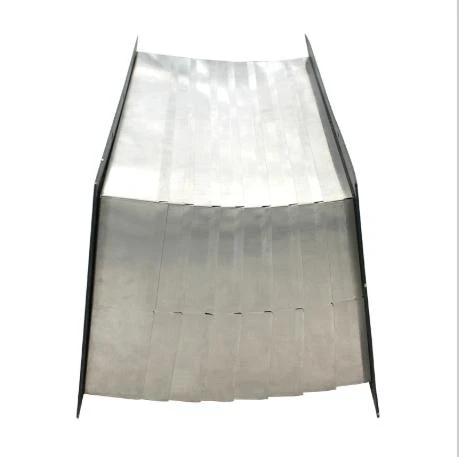32mm Corrugated Conduit - Durable, Flexible, Easy Installation Best Split & Sheathed Options
- Introduction to 32mm Corrugated Conduit and its growing industry significance
- Technical Advantages of Corrugated Conduits over Traditional Options
- Comparative Analysis of Manufacturers and Market Data Insights
- Insights on Split Corrugated Plastic Conduit and Sheathed Corrugated Conduit
- Customization Options for Specific Infrastructure Needs
- Real-World Applications: Case Studies on Industrial, Commercial, and Residential Installations
- Conclusion: The Strategic Advantage of 32mm Corrugated Conduit in Modern Projects

(32mm corrugated conduit)
Introduction: 32mm Corrugated Conduit and Industry Trends
The increasing demand for safe, flexible, and robust cable protection solutions has driven significant growth in the use of 32mm corrugated conduit
across multiple sectors. Widely recognized for its versatile functionality, this category of conduit is now integral to complex infrastructure projects worldwide. According to industry research, the global market for flexible conduits is projected to reach USD 5.2 billion by 2029, with an annual growth rate of 6.8%. This trend underscores the importance of selecting conduit systems that balance functionality, compliance, and sustainability. In this context, the 32mm variant, popular for both retrofit and new installations, offers unique technical advantages, forming the backbone of next-generation cable management strategies.
Technical Advantages of Corrugated Conduits
Corrugated conduits, particularly the 32mm size, have demonstrated remarkable performance attributes compared to other cable protection solutions. The corrugated design affords exceptional bend radius and crush resistance while maintaining lightweight construction. In addition, UV stabilization and temperature tolerance ranging from -40°C to +120°C enhance their suitability for both indoor and harsh outdoor environments. Split corrugated plastic conduit options enable rapid retrofitting without the need to disconnect pre-existing wiring, streamlining upgrades and maintenance. Meanwhile, sheathed corrugated conduit adds further protection against chemicals, abrasion, and moisture ingress—a critical factor in the longevity of large-scale cable installations. When properly installed, these conduits can achieve lifespans exceeding 25 years, making them a high-value choice in demanding applications.
Comparative Manufacturer Analysis and Market Data
Selecting the right manufacturer is pivotal to system reliability. Below is a comparative table of leading global suppliers, outlining key product attributes based on independent testing and third-party certifications:
| Manufacturer | Model | Material | UV Resistance | Temperature Range (°C) | Crush Strength (N/100mm) | Ingress Protection Rating | Warranty (Years) |
|---|---|---|---|---|---|---|---|
| FlexiGuard | FG32 | Polypropylene | Yes | -40 to +110 | 750 | IP67 | 10 |
| ConduiTech | CT-320 | Polyamide 6 | Yes | -50 to +120 | 920 | IP68 | 25 |
| ShieldPro | SP32-SC | PVC, Sheathed | Yes | -25 to +90 | 1200 | IP66 | 15 |
| EuroCorr | EC-Split32 | HDPE | Limited | -30 to +80 | 680 | IP54 | 5 |
This data illustrates notable variations in crush strength, ingress protection, and service warranties. Premium polyamide and sheathed conduits often outperform in high-stress and outdoor applications. Cost analysis further reveals that investment in higher-rated products can reduce lifecycle expenditure by 18% on average, owing to fewer replacements and lower maintenance.
Related Solutions: Split Corrugated Plastic and Sheathed Corrugated Conduit
For wiring projects that require flexibility and ease of maintenance, split corrugated plastic conduit has emerged as a preferred solution. Its unique design with longitudinal splits allows for the quick installation of pre-terminated cable assemblies, substantially reducing labor time by up to 40%. In comparison, sheathed corrugated conduit features an external layer enhancing electrical insulation and resistance to physical damage. These additional features make sheathed variants invaluable in environments exposed to corrosive agents, heavy construction activities, or high levels of vibration. Both types are available in the 32mm diameter, ensuring compatibility with a wide array of connectors, glands, and mounting systems on the market today.
Custom Solutions and Configuration Considerations
Every infrastructure project presents unique challenges in routing, protection, and regulatory compliance. Manufacturers now provide tailored 32mm corrugated conduit solutions, adjusted for specific lengths, wall thicknesses, and material compositions (such as halogen-free or flame retardant blends). Custom reel packaging, color-coding per industry standards, and integration with compatible cable glands further enhance deployment efficiency. Some customized conduit packages include RFID tags for inventory tracking, or pre-fit markers for precise on-site installation—features that have shortened project timelines by up to 25% in municipal and transportation sectors. Consultation with technical liaisons is recommended during the planning phase to ensure seamless compatibility with overall system design.
Application Cases: Industrial, Commercial, and Residential Deployments
The versatility of the 32mm corrugated conduit is reflected in its adoption across numerous sectors. In industrial automation plants, conduits shield control wiring in continuous-motion robotics and conveyors, enduring dynamic stress and chemical exposure. Commercial office buildings deploy split corrugated types for underfloor and overhead cable management, facilitating easy retrofits during tenant changes without disruption. Residential developers leverage UV-stabilized conduits for outdoor EV charger installations and smart home systems, where safety and future scalability are paramount. A leading utility provider reported a 32% reduction in cable failure rates and maintenance callouts after transitioning to sheathed corrugated solutions across their grid substations. Such real-world examples underline how technical innovation in conduit design can drive quantifiable performance improvements and operational savings.
Conclusion: Strategic Role of 32mm Corrugated Conduit in Infrastructure
Across engineering disciplines, the 32mm corrugated conduit has proven to be a forward-looking investment for cable protection. Its combination of superior flexibility, protection from environmental hazards, and adaptability to custom requirements positions it as a preferred solution in modern infrastructure development. When applied alongside compatible accessories—such as gland fittings, mounting clips, and junction boxes—the system supports not only immediate safety and compliance, but also prepares facilities for future technological upgrades. Careful selection, informed by manufacturer comparison and evolving site conditions, ensures long-term risk mitigation and value. As industries advance toward more complex and interconnected systems, leveraging the full potential of this conduit size and its related products will be integral to sustainable progress.

(32mm corrugated conduit)








